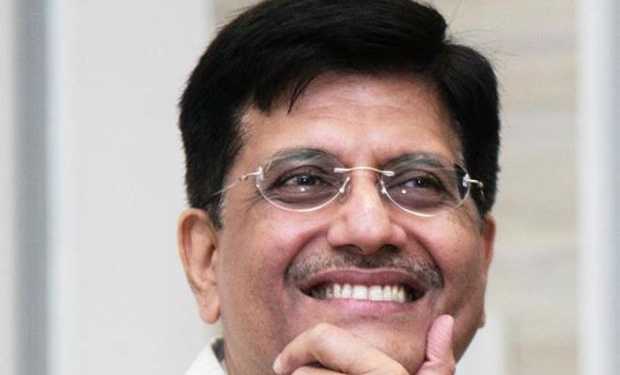The Railway Ministry under Piyush Goyal is set to undertake the largest ever divestment plan in the Indian Railways. The ministry has set a target of 25,000 crores through monetization of its power transmission lines which is also known as overhead equipment network. The money raised through divestment will be used for electrification of Indian railways. As of now, almost 45 percent of Indian railways is electrified, the rest 55 percent still runs on fossil fuels. The railway plans to electrify all major routes in the next five years. The electrification drive is expected to make railways more efficient; in a recent event Piyush Goyal said “Reducing cost is the most important thing. If we were to electrify large parts of our network, we can easily save around Rs 15,000 crore in fuel bill itself.”
The proposal came in the last fiscal as well but it was dropped due to the reservations from some top officials in the ministry. “Earlier, there were several reservations related to the proposal as such kind of divestment has never been undertaken by the Indian railways. Also, we were apprehensive if the rail unions would agree to it. But now the air has been cleared and we are hopeful of going ahead with the proposal soon,” an official explained. But now under Piyush Goyal, all the differences had been sorted out and the ministry is prepared to go for divestment. On the procedure of divestment, an official said “one of the PSUs will be of the railway ministry and the other one could be from the power ministry. The JV would pay railways upfront and the national transporter will take these lines on lease and pay a fixed interest to the owner.” Although despite the purchase the Indian railways will continue with the operations and management (O&M) of these lines. The interest rate which these public sector undertakings will charge to the railway is expected to be at seven percent.
The revenue target for this fiscal year is 2 lakh crore while the target of 4 lakh crore is set out for 2025. The ministry is hoping to raise Rs 27,000 crore through the non-fare box that mostly includes monetization of assets, including the land bank. Rs 1.73 lakh crore is expected to come from the freight and passenger earnings. The revenues of railways will be improved by increasing its share of freight from 33% to 45%. The Indian Railway is the lifeline of India. In a country that is so vast and diverse, railway unites us by making it easier for us to travel through the length and breadth of the country. The India Railway manages the fourth largest network in the world, carrying 8.26 billion passengers and transports 1.16 billion tons of freight yearly as of the fiscal year 2018. The operations of the railways have changed significantly, moving from operating on coal at the time of independence to petroleum, and now almost half of the trains run on electricity. India was the first country in Asia to have railway connectivity, and now we are so dependent on it that we cannot imagine living in the country without the convenience of a vast network of railways.
Under Suresh Prabhu, the Railway Ministry focused on getting Railways out of the cycle of under-investment and creating future network capacity through long-gestation works. Under his tenure, ticket booking has been made free of dalals and become fairly transparent. NDA government in last four years has focused on infrastructure capacity building laying second, third and fourth line to enhance the network. Under the tutelage of Piyush Goyal, the railways brought down the number of accidents to 73 for the year of 2017-18, which is the lowest ever recorded yet. The Railway Ministry has been able to bring the project of a bullet train and a railway university, which were stuck in limbo due to the policy paralysis during UPA era.
































